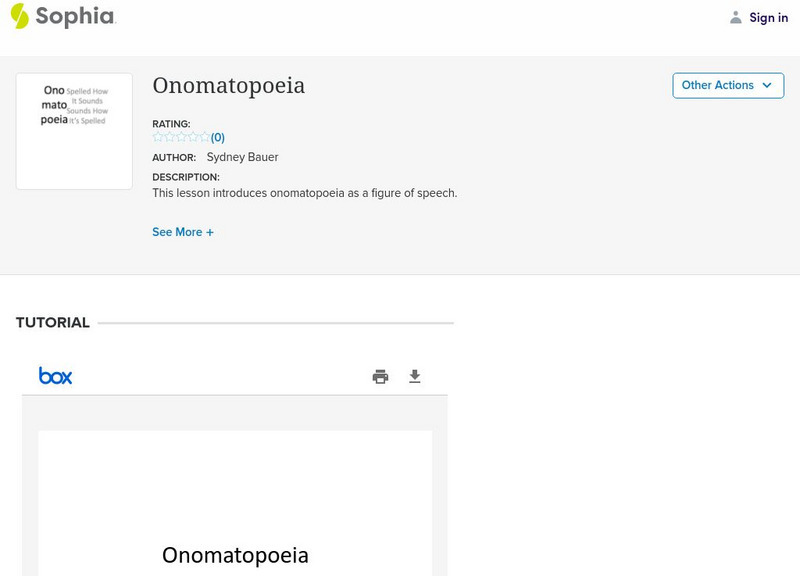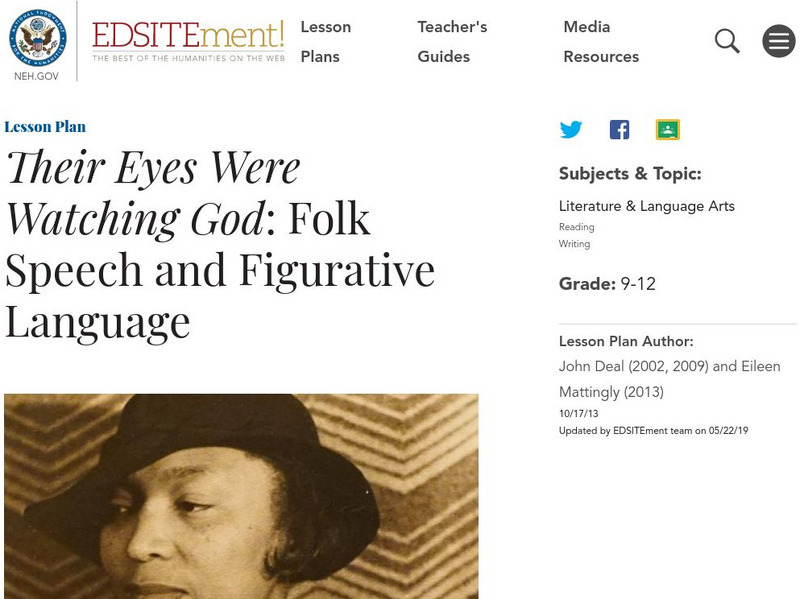Sophia Learning
Sophia: Euphemisms
This slideshow lesson focuses on euphemisms including providing definition and background, lists of common examples, practice determining meaning, information about when to use, and links to more information about them. L.9-10.5a Figures...
ReadWriteThink
Read Write Think: An Ocean Unit Exploring Simile and Metaphor
Contains plans for four lessons that teach students about similes and metaphors using ocean themed resources. In addition to objectives and standards, this instructional plan contains links to sites used in the lessons as well as...
Alabama Learning Exchange
Alex: Poetry and Music Fun With Chris Daughtry
This language arts lesson grabs students' attention by incorporating a popular musician. The lyrics to "Over You" include vivid language that makes identifying figures of speech intriguing. The students will identify similes, metaphors,...
Texas Education Agency
Texas Gateway: Understanding and Analysis of Literary Text: Syntax
A learning module that teaches students about syntax in six mini-lessons: Introduction, What is Syntax?, The Building Blocks of Syntax-Clauses and Phrases, Adding on-Figures of Speech, and Your Turn.
ReadWriteThink
Read Write Think: A Close Reading of Seamus Heaney's "Blackberry Picking"
Contains plans for two lessons that explain an inductive method for analyzing poetry. Seamus Heaney's "Blackberry Picking" is analyzed using this model as an example, although the method can be used on a variety of poems. In addition to...
ReadWriteThink
Read Write Think: Style Choices of Hemingway and Hawthorne
Lesson plan which helps students understand the impact of the literary element of style on a piece of writing. Students read and analyze the works of Ernest Hemingway and Nathaniel Hawthorne. L.11-12.3 Language Functions/Style,...
TED Talks
Ted: Ted Ed: Can You Solve the Troll's Paradox Riddle?
You and your brother have discovered another realm and set off exploring the new wonderful world. Along the way, you see a troll catching creatures in an enormous net. The troll agrees to release the creatures if you can come up with a...
ReadWriteThink
Read Write Think: Writing Abc Books to Enhance Reading Comprehension
Contains plans for four lessons that are adaptable to many texts that young scholars may be reading. Students analyze the text for literary elements such as characters, setting, figures of speech, and themes, and then publish their...
Sophia Learning
Sophia: Cliches: Lesson 1
This lessons introduces cliches and discusses their use. It is 1 of 4 in the series titled "Cliches."
Georgia Department of Education
Ga Virtual Learning: American Literature; American Romanticism: Vocabulary
This lesson focuses on defining the literary terms in American Romanticism. It features a list of terms and an interactive crossword puzzle using them.
Sophia Learning
Sophia: Antithesis
This slideshow lesson focuses on antithesis; it defines it and explains its uses: to acknowledge the complexity of the situation, to emphasize contrast, and to create a balance between opposites.
Georgia Department of Education
Ga Virtual Learning: American Literature and Composition: Rationalism: Rhetoric
This lesson focuses on Rhetoric and the literary techniques used in American Revolutionary speeches and writings. Students are asked to determine the rhetorical devices used in quotes from "The Crisis No 1" by Thomas Paine and Patrick...
TES Global
Blendspace: Poetry
A six-part learning module with links to texts and videos on figurative language in poetry.
PBS
Wnet: Thirteen: I Have a Metaphor
This lesson not only examines the message of Dr. King, but also the words themselves. This is a lesson in identifying the literary devices that he used in his "I Have a Dream" Speech. It will introduce the following literary devices:...
Alabama Learning Exchange
Alex: Producing Poetic Podcasts (Hey, That's Alliteration!)
In this culminating lesson for a poetry unit, students will create a video podcast that summarizes a specific poem, analyzes the poet's use of literary elements, and infers the meaning of the poem (theme). The podcast must use a talk...
Alabama Learning Exchange
Alex: Literary Elements in Literature
This lesson is applicable to any story or novel in literature. The students will be introduced to twelve literary elements through a podcast. They will then be divided into small groups to complete activities involving story and literary...
abcteach
Abcteach: Similes [Pdf]
This printable worksheet tutorial tests your knowledge of writing snow similes.
TES Global
Blendspace: Idioms, Adages, Proverbs
A six-part learning module with links to texts and videos to use while learning about idioms, adages, and proverbs.
Texas Education Agency
Texas Gateway: Literary Nonfiction
[Accessible by TX Educators. Free Registration/Login Required] In this lesson, you will learn how to analyze literary nonfiction, especially speeches, by making inferences and drawing conclusions based on evidence in the text. The...
National Endowment for the Humanities
Neh: Edsit Ement: Folklore in Zora Neale Hurston's "Their Eyes Were Watching God"
In this lesson plan, students will consider "Folklore in Zora Neale Hurston's "Their Eyes Were Watching God"." The plan includes worksheets and other student materials that can be found under the resource tab.
TED Talks
Ted: Ted Ed: Can Machines Read Your Emotions?
Computers can beat us in board games, transcribe speech, and instantly identify almost any object. But will future robots go further by learning to figure out what we're feeling? Kostas Karpouzis imagines a future where machines and the...
ClassFlow
Class Flow: Civil Rights Movement
[Free Registration/Login Required] Through this lesson, students identify individual, personal, and political rights (freedom of religion, freedom of speech, right to own property) by analyzing lives of historical African American...



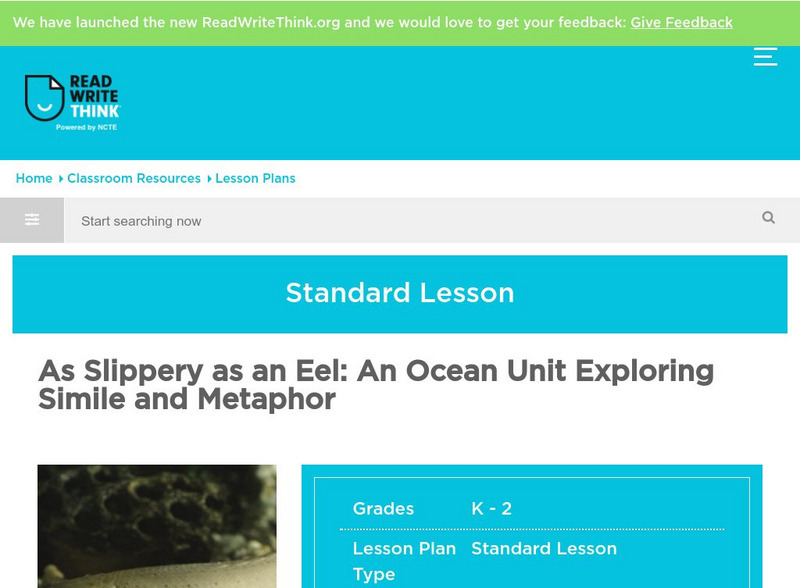









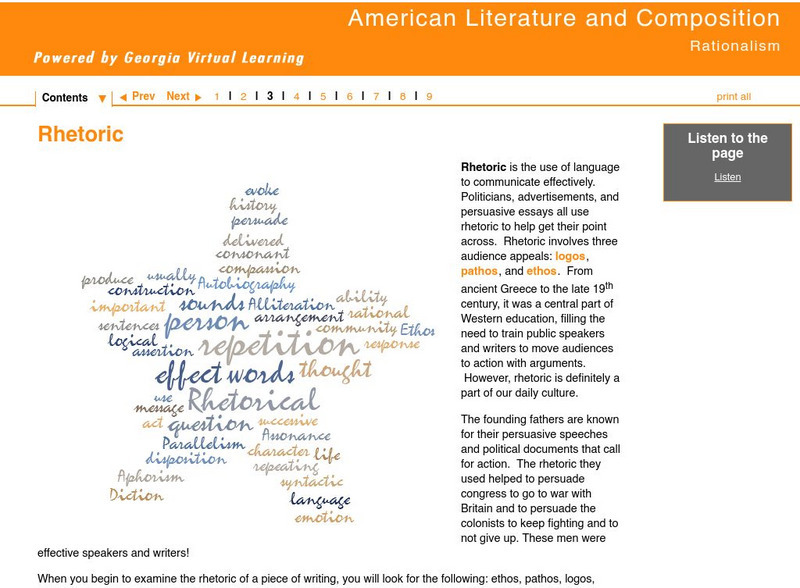
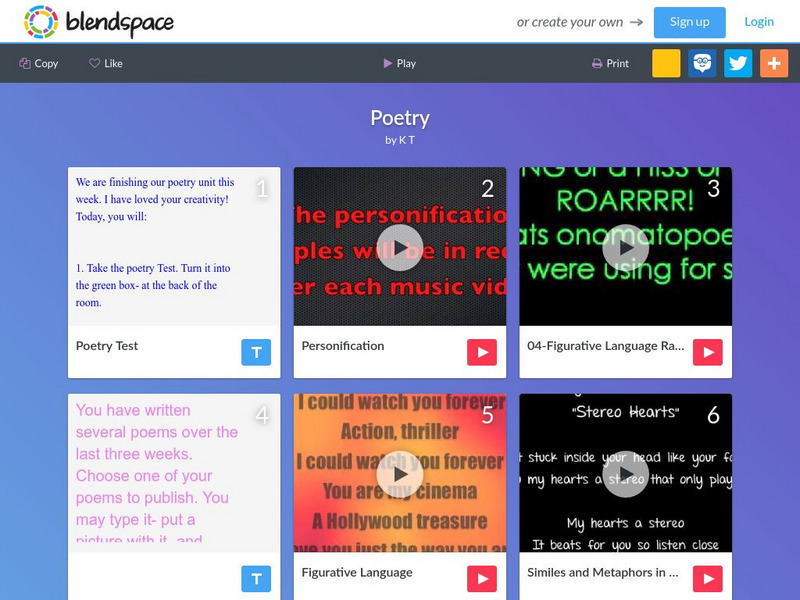




![Abcteach: Similes [Pdf] Unknown Type Abcteach: Similes [Pdf] Unknown Type](https://d15y2dacu3jp90.cloudfront.net/images/attachment_defaults/resource/large/FPO-knovation.png)


